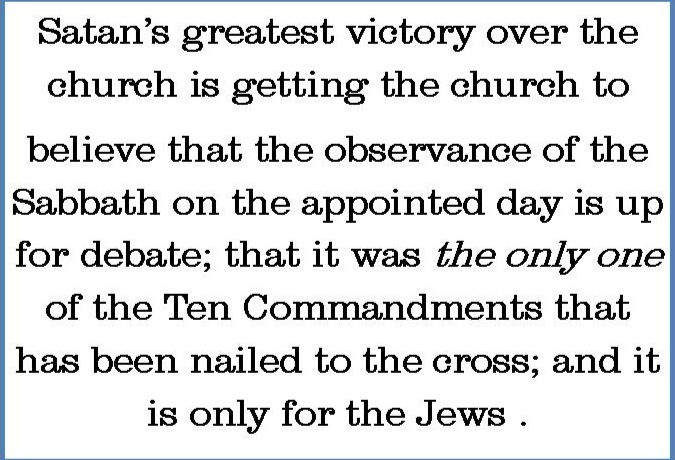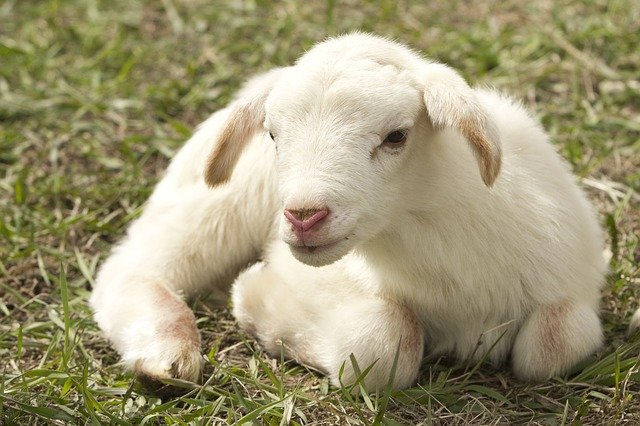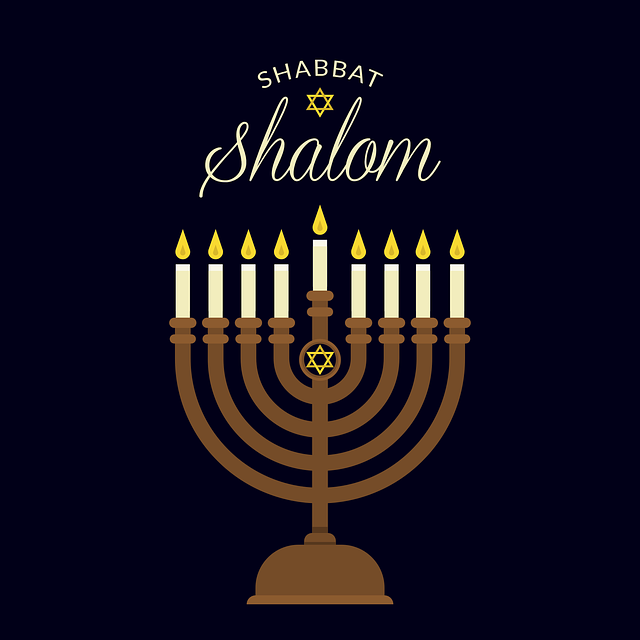The Holy Feast Days
- Taneallea Feddis

- Jun 30, 2020
- 10 min read
Updated: Mar 29, 2024

“…Let there be lights in the firmament of the heavens to divide the day from the night; and let them be for signs and seasons (feasts) and for days and years (a calendar system)…” (Genesis 1:14, NKJV, emphasis mine).
Why do a study on the Feasts? Were they only for the purpose of remembrance for certain events in Hebrew history? Certainly, the Feasts could in no way be applicable or even important for the child of Elohim today?
Wrong!
The Feasts are in every way applicable today for the simple reason that Elohim does nothing randomly and no event authored by Elohim is meaningless. The Almighty has a habit for teaching the same thing over and over in many different ways, and whatever He teaches carries perpetual significance.
The Feasts are no exception. The 8 Holy Feasts are divine events which have taken place in the past, and will be repeated on a more global scale in the future. These are events orchestrated by Yeshua Himself and are to be done on earth twice: first on a national and physical level with the Hebrews, and then after on a global and spiritual level at specific times. What happens in heaven will surely be reflected on earth.
This is a summary of all the appointed days that are sacred to the Creator. A full description of these feasts can be found in Leviticus 23 of the Bible.
The Sabbath (Shabbat)
This is a weekly celebration of creation and a taste of the promise of Heaven. This is celebrated on the seventh day of the Jewish week (sunset Friday to sunset Saturday on our calendar). Hence, it is also called the “Weekly Sabbath”.
It was to be a sign forever that the Israelites were the true people of God, a perpetual covenant (Exodus 31:12-17), not to be confused with the “old covenant” which was imperfect and offered temporary remission of sins.
"Six days work may be done, but on the seventh day there must be a Sabbath of complete rest, a holy assembly. You must not do any work; it is a Sabbath to the Lord in all the places where you live" (Leviticus 23:3).

The Sabbath was the very first feast mentioned in Leviticus 23, and its position and inclusion denotes its importance. Since this feast is a weekly celebration and not an annual one, it seems odd to appear in this list of annual feasts in the first place.
However, for the purposes of this teaching and the controversy over this topic, I have devoted an entire teaching on the Mystery of the Sabbath to speak on this very special but often overlooked feast. For now, I will continue by explaining the symbols behind the 7 annual feasts and why they may be applicable today.
The Passover (Pesach)

This is celebrated on the 14th evening of the 1st month of the Holy Calendar (around March/April) on our calendar. This time coincides with the spring equinox and the first of the grain harvest.
Two full weeks after the first new moon of the year, while still enslaved in Egypt, the Israelites where commanded to observe the first Passover because it was on that evening when they would obtain their liberty.
The true meaning behind the Passover was deliverance: deliverance from death, slavery, poverty, second class citizenship, ignorance, ungodliness, and sin, and was not only for the Israelites but for the world.
The first Passover was on a small scale, the second was on a much larger scale with the death of Yeshua, our Passover lamb. We see this tendency over and over throughout Scriptures as God does something first then repeats the same action on a global scale; and we witness this time and time again with each appointed feast.
The Feast of Unleavened Bread

This is celebrated on the 15th day of the 1st month and is celebrated for 7 days. The first and last days of this feast are solemn days or Sabbaths.
The first Feast of Unleavened Bread took place on the evening of the very day the Hebrews left Egypt. As they sacrificed the Passover lamb each year, they were to remember their deliverance from slavery (Exodus 13, Deuteronomy 16). They were to eat no leaven for seven days as they journeyed to the Promised Land. Later this would remain to commemorate the first 7 days they travelled in the desert as a symbol of being free from bondage and sin.
The leaven, or yeast as we call it, represents sin. The Israelites were commanded to make unleavened bread, as leavened bread (an Egyptian method of baking bread) symbolised sin and false doctrines (Mathew 16:12); while unleavened bread represented the broken body of Yeshua ha Mashiach, who was without spot or blemish.
Additionally, they were to eat it as a reminder that when they left Egypt that evening they left in haste (Deuteronomy 16:3). This is the manner in which we should quickly leave our life of sin when we become free in Yeshua.
This feast is not a feast of bondage, but of liberty. As we break the bread of affliction we remember the body of our Saviour broken for our disobedience and unfaithfulness to Him. This affliction is not for us, but for our Messiah. For us it is the symbol of freedom.
The Hebrew people were to celebrate the Feast of Unleavened Bread by remembering their affliction as they left Egypt, but for the child of Elohim, we are to remember our affliction as we try to overcome our own sins.
The leaven represents sin and the feast commemorates our release from the bondage of sin into the freedom that the Holy Spirit gives us. By observing this feast, it gives us more perspective into how sin weaves itself into our lives and how hard it is to eradicate it with our own efforts.
One cannot simply study this feast on an academic level; you must experience it, participate in it, to truly understand and appreciate its teachings.
The Wave Sheaf Offering

The wave sheaf offering was to be made at the beginning of the spring harvest. No one was allowed to eat from any crop (grain) until after the day of the wave sheave offering (Exodus 23:16).
This special offering was always held on a Sunday, the day after the first Sabbath during the Feast of Unleavened Bread. This was a celebration of the first fruits of the grain harvest. Yeshua was resurrected on the day of the wave sheaf offering as a symbol of the first fruit of Elohim’s harvest of souls.
Pentecost (Shavuot)

Also known as the Feast of Weeks, the Pentecost is celebrated 50 days after the Passover Festival. This would usually be in May or June on our calendar.
It is called Feast of Weeks because one would count 7 Sabbaths after Passover, plus a day, to find the day on which this feast should be celebrated. Like the wave sheaf offering, it is always observed on a Sunday.
Being the final of the spring festivals, this was another harvest festival celebrating the harvest of the first fruits of grain. Traditionally, at the end of the year in autumn, another harvest festival, the Feast of Tabernacles is also observed - this is the final harvest of the year and the largest.
All Hebrew males were required to be present with a freewill offering at three appointed yearly feasts: the Feast of Unleavened Bread (the wave sheaf offering), the Pentecost, and the Feast of Tabernacles (Deuteronomy 16:16, Exodus 23:1-18).
In the New Testament, this feast was given a new and spiritual meaning.
Over and over in His parables, Yeshua describes the Kingdom of Heaven as a field, where the children of God are the wheat, the sinners the tares, and Yeshua and His angels the gatherers (Matthew 13).
After the Messiah’s death and resurrection, the disciples experienced the coming of the Holy Spirit on Pentecost making those men Holy vessels of God. They were given authority over the power of demons (Luke 10:17) and the ability to speak in another man’s language instantly (Acts 2:1-8). They were also given the commission to heal the sick, the blind, the disabled, preach the gospel of the coming Kingdom of Heaven and win souls for Elohim (Mark 16:17-18). They were the first people to receive the Holy Spirit and some of the power of Elohim (Acts 1); they were the first fruits of Elohim’s harvest of souls for His Kingdom.
This feast will be fulfilled again on a global scale just before the 7th seal is broken.
At that time the Holy Spirit will be poured out once again to mankind, sealed for the harvest of the coming Kingdom. The latter harvest (the ingathering of the saints) will be reaped after the 7th trumpet sounds – at the second coming of Yeshua, the Messiah.
Trumpets (Rosh Hashanah)

This is the 1st of the autumn festivals, and it is celebrated on the new moon of the 7th month (that is, in September/October on our calendar).
Every new moon is celebrated by the Hebrews on the 1st day of each month, and on these evenings trumpets are blown over the peace offerings (Numbers 10:10). The priests were commanded to blow trumpets every month during times of war, as well as during times of peace (Numbers 10:9).
The blowing of trumpets was a symbol of war, and for the Hebrew people, it was also a cry for help from God during warfare. During times of peace, they were to blow the trumpets on every New Moon festival and on every Day of Trumpets, as a remembrance that during times of war, Elohim hears their cries and delivers them from their enemies (Numbers 10:9-10).
In other words, the trumpets were a sound of deliverance. Additionally, we see trumpets blown in Heaven as the Lamb of God breaks the seals of the Book of Life symbolising a countdown of sorts to the end of this age of sin and despair.
The Feast of Trumpets is a festival celebrating the second coming of Yeshua. In the last days, the seals on the Book of Life will be broken one by one in Heaven; and with each broken seal, a trumpet will sound and God will release his wrath in the form of plagues on the earth upon the wicked (Revelation 8, 9, 11 and 16).
There are 7 seals in total, 7 blows of the trumpets, and 7 plagues (Revelation 6, 8, 16). On the 7th trumpet, the cavalry exits the Most Holy Place and journeys to earth. The veil that once concealed and protected us from the glory of God will be removed and we will see Him with our own eyes coming in the clouds, leading His army of angels on a white horse (Revelation 19:11-16).
He will take back the kingdoms of this world and set up an everlasting kingdom of peace (Revelation 11:15-19, Daniel 2:44-45).
If we follow what the Scripture state and what Yeshua taught us, we will know without a doubt that He will come on an autumn day, more precisely, on the Day of Trumpets.
Atonement (Yom Kippur)

The Day of Atonement occurs 10 days after the Feast of Trumpets and represents 10 days of repentance. It is not called ‘feast’, although it is in the list of the annual feasts to be observed, because it is a day of fasting and penance. It is a solemn occasion when one confesses his/her personal sins and prepares to meet with Elohim.
From the temple service, we learn that on this day the sins of Israel were placed on a scapegoat that was taken to the desert to be thrown off a precipice (Jewish Encyclopaedia).
In light of the events in John’s Apocalypse (the book of Revelation), this is the day when sin will be totally irradiated from the world (the nations) and placed on Satan (the scapegoat), who is then thrown into the bottomless pit, a wilderness of sort (Revelation 20:1-3).
The Day of Atonement is what every child of the Most High look forward to. It is the day when we will become ‘at one’ with Elohim. It is not just a symbolic day, it will be a real event; a fulfilment like all the other feasts, which brings us to the Feast of Tabernacles.
Tabernacles (Sukkot)

Also called the Festival of Shelters, this is a celebration where the Hebrews would leave their homes to live in tents, or booths, for 7 days.
This feast was to commemorate their journey while in the wilderness after their escape from Egypt. For them, this was a time of release and redemption (Deuteronomy 31:10). For the poor, every forty-nine years, it was a time of release from slavery, debts, and servitude.
A tabernacle is a temporary dwelling or tent.
Revelation 20 speaks of a coming millennium when Yeshua will rule the nations with the help of His royal priesthood. After this 1,000 years period, Satan will be released to deceive the nations again and make war on Jerusalem. They will ultimately be defeated by God, then the heavens and the earth will pass away and the dead judged.
It is interesting to note that the Feast of Tabernacles is celebrated for 7 days or 1 week. It is also said that a day to Elohim is like a thousand years (Psalms 90:4, 2 Peter 3:8). This feast could also be a representation of the great week of salvation, the 7,000 years that Elohim has allotted to redeem mankind.
The Eighth Day (Shemini Atzeret)

On the day after the end of the Feast of Tabernacles there is a holy convocation – the 8th Day. It is the day of completion. It is called the ‘Eighth Day’ because it is celebrated directly after the Feast of Tabernacles, although it is not actually a part of the feast.
This is the last great day in the story of redemption and signifies the judgement or the period when heaven and earth will pass away. This is the day when sin will be totally obliterated, the wicked judged and destroyed, and a new heavens and a new earth are created. This day marks the end of Elohim’s redemptive calendar of events and the original purpose of man is reinstated.
I hope that you have been blessed by this teaching, and I hope that you will investigate all that is written above and match it to what the scriptures reveal and not according to our world worldview.
For “The heart is deceitful above all things, and desperately wicked: who can know it?” (Jeremiah 17:9, NKJV), but test these words by “rightly dividing the word of truth” (2 Timothy 2:15, NKJV).
*All quotations from the Bible were taken from the New English Translation (NET) Bible unless otherwise specified.




Commenti